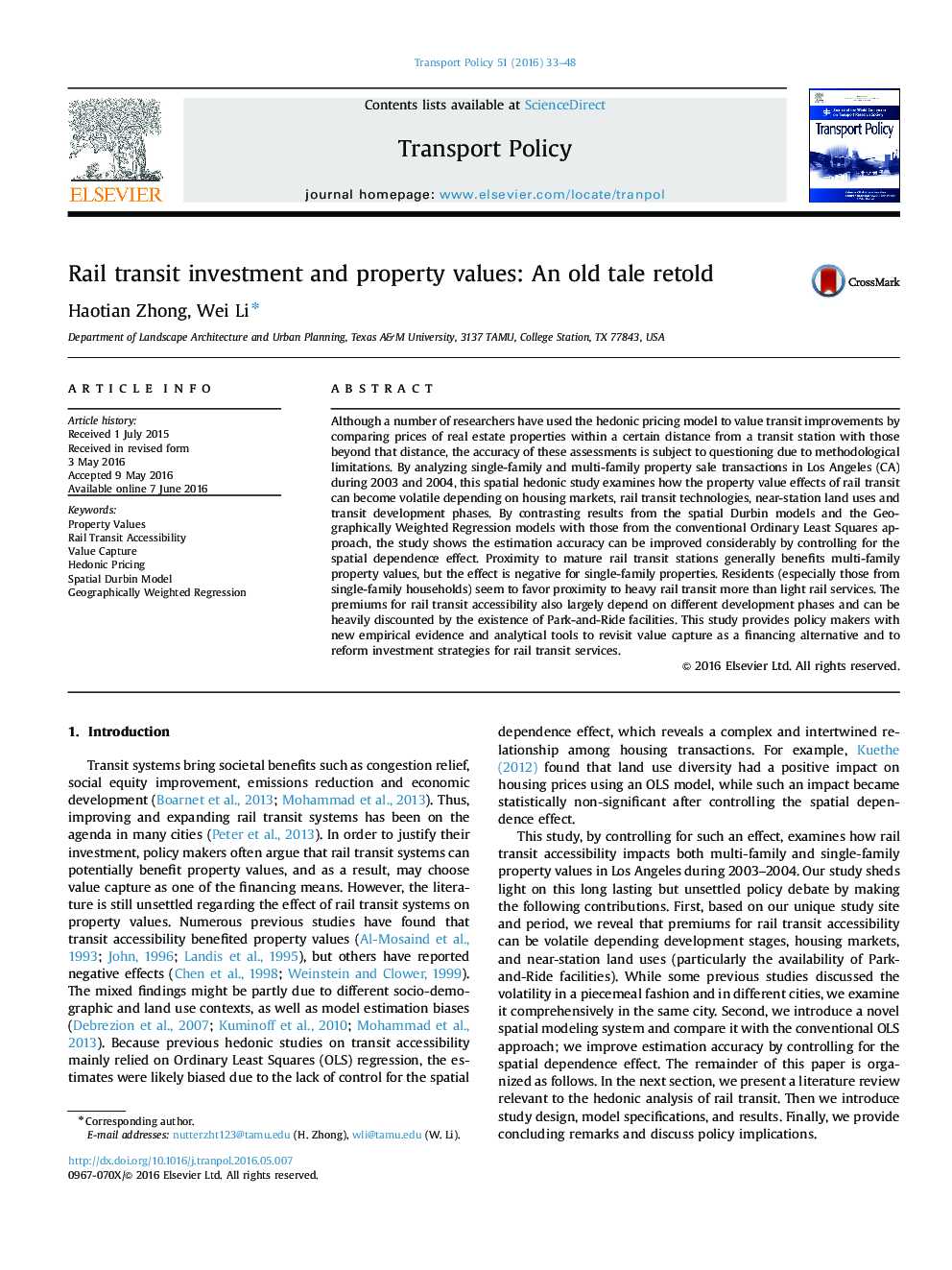| Article ID | Journal | Published Year | Pages | File Type |
|---|---|---|---|---|
| 5119184 | Transport Policy | 2016 | 16 Pages |
â¢Premiums for rail transit accessibility depend on development stage, housing market and land use.â¢Spatial hedonic models considerably outperform the OLS method when estimating the premiums.â¢Premiums are heavily discounted by the existence of Park-and-Ride facilities.
Although a number of researchers have used the hedonic pricing model to value transit improvements by comparing prices of real estate properties within a certain distance from a transit station with those beyond that distance, the accuracy of these assessments is subject to questioning due to methodological limitations. By analyzing single-family and multi-family property sale transactions in Los Angeles (CA) during 2003 and 2004, this spatial hedonic study examines how the property value effects of rail transit can become volatile depending on housing markets, rail transit technologies, near-station land uses and transit development phases. By contrasting results from the spatial Durbin models and the Geographically Weighted Regression models with those from the conventional Ordinary Least Squares approach, the study shows the estimation accuracy can be improved considerably by controlling for the spatial dependence effect. Proximity to mature rail transit stations generally benefits multi-family property values, but the effect is negative for single-family properties. Residents (especially those from single-family households) seem to favor proximity to heavy rail transit more than light rail services. The premiums for rail transit accessibility also largely depend on different development phases and can be heavily discounted by the existence of Park-and-Ride facilities. This study provides policy makers with new empirical evidence and analytical tools to revisit value capture as a financing alternative and to reform investment strategies for rail transit services.
